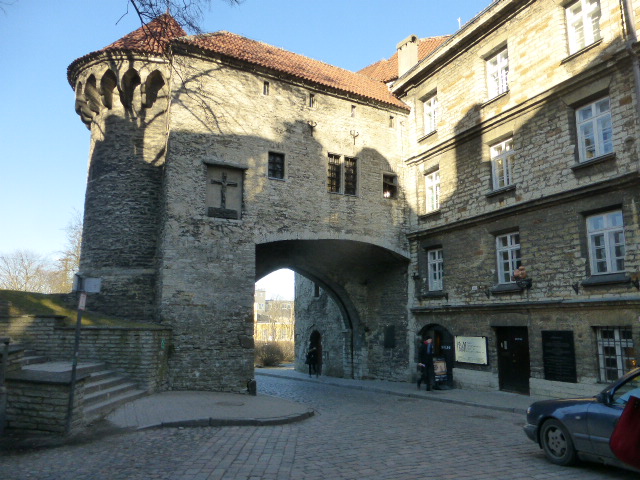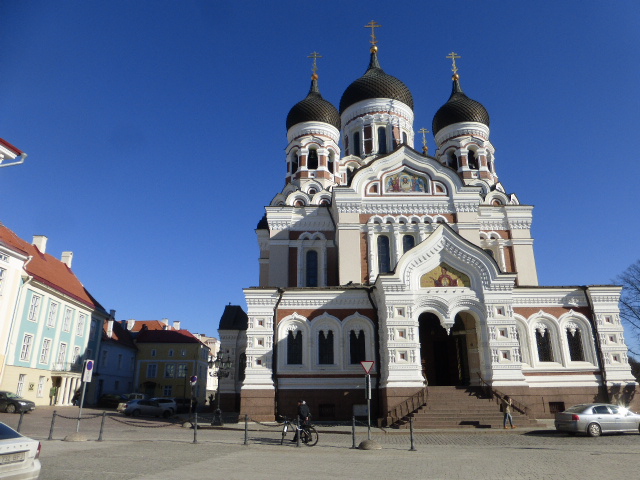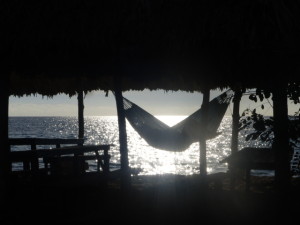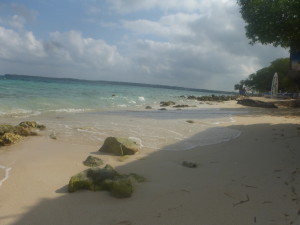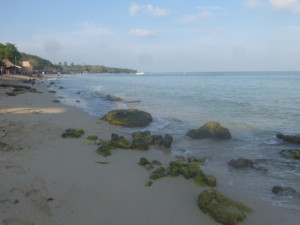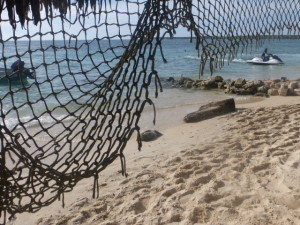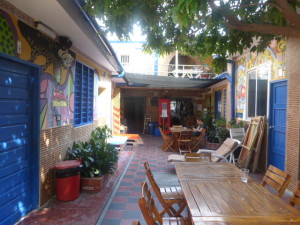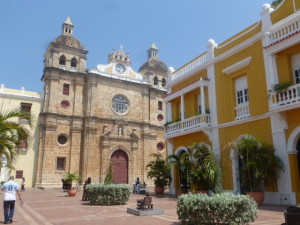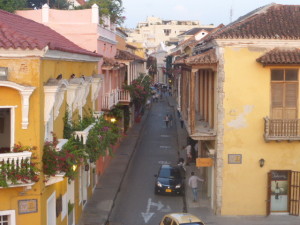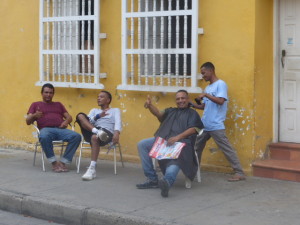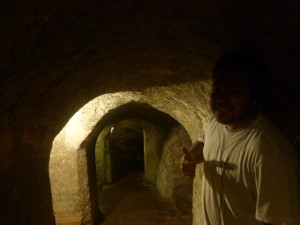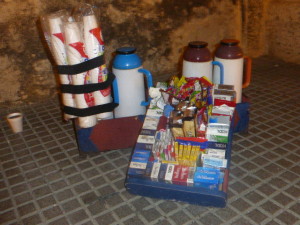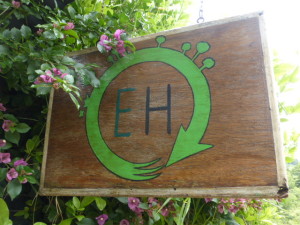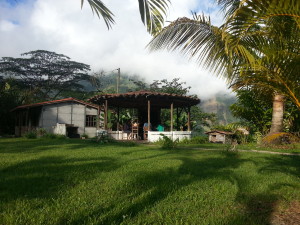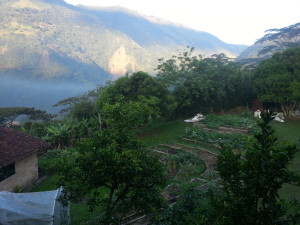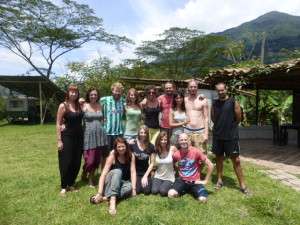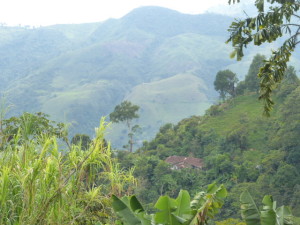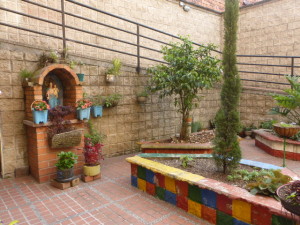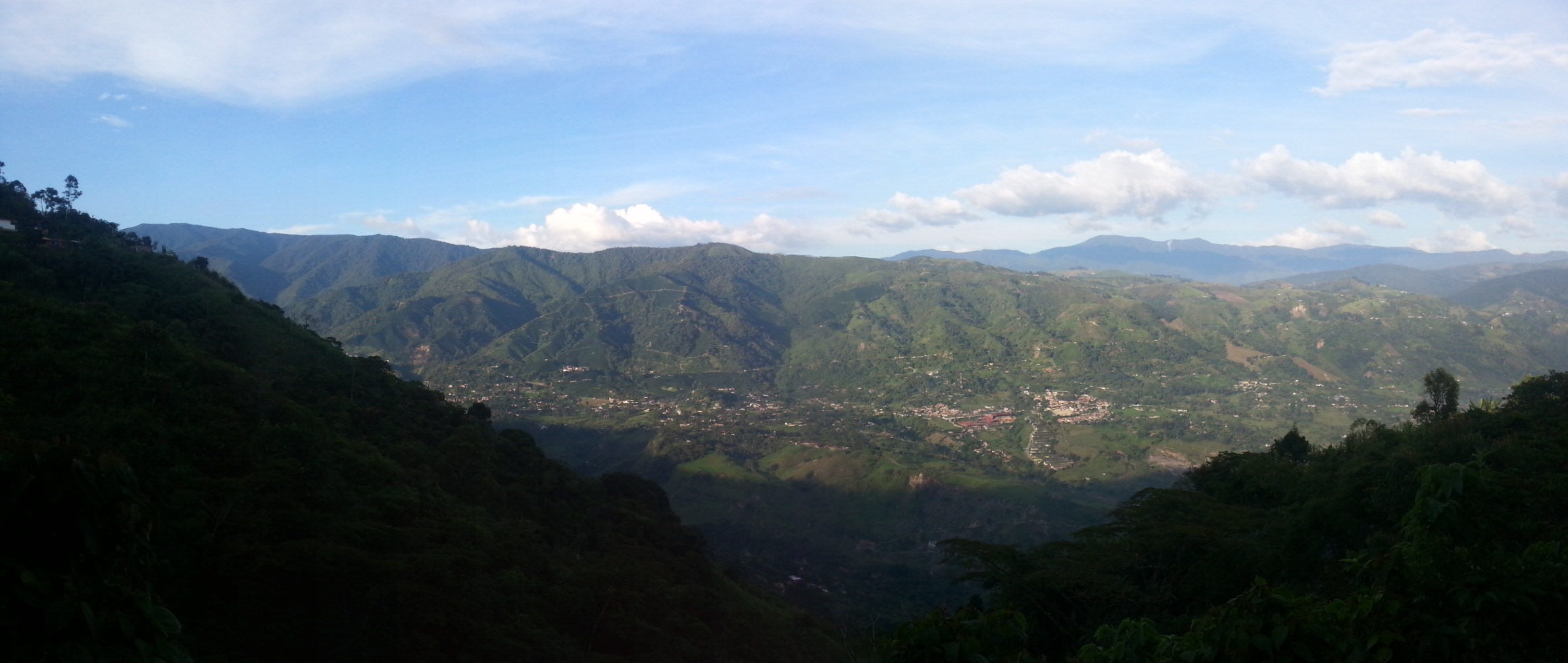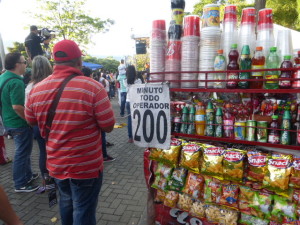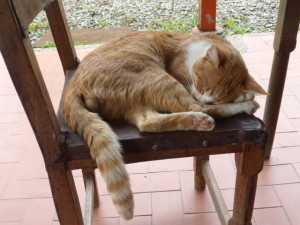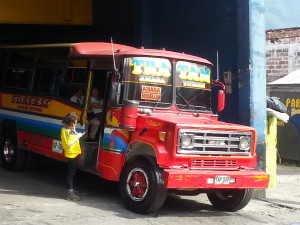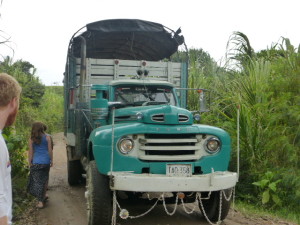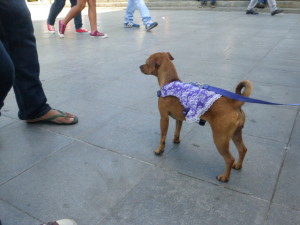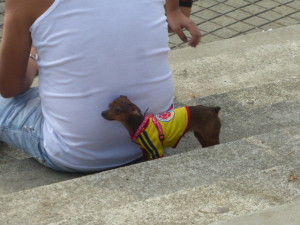
by Jane | Mar 24, 2015 | Europe, My travels |
My next adventure is underway. The starting point is Helsinki – the end point…who knows!
And from the very beginning it appeared that things were going to be a bit challenging.
Drama #1 occured as soon as I arrived at the airport. I was met by my fellow traveller who handed me the keys to his large (left-hand drive) transit van and he announced that, due to certain circumstances I had to drive.
Out of Helsinki during the rush hour. Along the motorway which was being dug up and like a slalom course. And directly into the low setting sun and with the sand which had been laid on the icy roads during the winter whipped up into a swirling sandstorm.
The only thing that I can say about that white knuckle ride was that the sky ahead of us resembled nothing that I had seen before – it was pure molten gold and more beautiful than any sky that I had ever seen.
I had been in Finland during winter once before when I had visited Tampere – you can read about that experience here

The frozen fjord at Espoo, Finland
But we survived the journey and the next day we spent a half a day walking around Helsinki which is an OK sort of a city, but it is very spread out. The highlights are the Uspenski Cathedral with its red brick and green onion dome roofs and the fantastic-from-the-outside-but-plain-inside white Cathedral.

Helsinki Cathedral
Drama #2 began after we had booked a night in an apart-hotel in the dormitory town of Espoo over the internet. The hotel had no receptionist present at any time. When you are sitting in your vehicle and you have very intermittent internet access and no Finnish SIM card and you have paid for the night over the internet but cannot open the email which contains details of your room and the key code, you cannot even begin to express your frustration. But eventually we sorted that problem out and got into the hotel.
On day 3 we were back in the van for another white knuckle ride back into Helsinki for the ferry port. Dodging the trams I was quite proud that I only managed to jump one red light – I didn’t notice the junction let alone the traffic lights – but I was just relieved to reach the terminal in one piece.
And then there was drama #3. Two very large border guards were cruising around the queue of cars when they pulled up alongside us and studied us intently. We KNEW that they would be interested in us and then they were asking for our papers. While everything was in order things were not straightforward (but not my story to tell at this stage here) and then I was being asked to blow into a breathalyser and I had the cells from my tongue scraped for a roadside drug test.
When everything came back negative (alcohol, marihuana, opiates and amphetamines) the border guards lost interest in us, allowed me to take a photo of the drug test and decided that they didn’t need to pull everything out of the van. And so I drove us onto the MS Finlandia for the 2.5 hour trip across the Gulf of Bothnia to Estonia.

Beach huts on one of the islands as we leave Finland
Estonia
If driving in Helsinki was nerve wracking I almost had a complete meltdown in Tallinn. Driving off the ferry I was horrified to discover that here there were trolley buses, which instilled fear into me as unlike trams they were perfectly capable of veering off their tracks and EVERYBODY was driving at twice the speed limit (at least) and they are, I think, probably the second most aggressive, fast drivers in the world – after those in Bahrain.
We tracked down our hotel for the night which was in an old stone building that was once a sauna complex for the town, and from which we could see the large castle which dominates Tallinn.

Part of the castle at Tallinn, Estonia
On Sunday morning we set off on foot to explore, wandering around the little winding streets although it was next to impossible to get lost as the tall spires of the various churches which rose above the walled city acted as good orientation points. Tallinn has an incredibly well preserved wall surrounding much of it and little streets which are a charming mix of the traditional wooden houses and the modern. The old town square was picture postcard perfect in the warm winter sun and we were lucky enough to bag a table outside one of the little bars and rest for a while.

The town hall in the Old Town Square, Tallinn, Estonia
We visited the Orthodox cathedral which is up near the castle complex. The inside was atmospheric with the smokey haze and scent from the candles and the incense rising high up into the onion dome. Pillars were painted with flowers and swirls and there was constant movement as people flowed between the various icons and altars, many stooping to touch the floor and some even kneeling to kiss the floor in front of some of the relics.

The Orthodox Cathedral, Tallinn, Estonia
I had really enjoyed learning Spanish when I was travelling in South America and now on this trip I want to learn a musical instrument. Many travellers have guitars or drums but as I desperately need to reduce the weight that I carry, I opted for the harmonica. Back at the hotel that evening S, my fellow traveller who can play many instruments very well gave me my first harmonica lesson. I thought that it went rather well, and rather easier to learn that Spanish but some of the other hotel guests may argue otherwise.
The following day I went out alone to explore Tallinn. I found the ‘Knit Market’ where rows of stalls are set into arches underneath the town walls and ladies sit knitting and selling their woollen socks and jumpers. I found the ‘Cat Well’ where in the olden times people would throw the stray cats (dead and often alive) as a sacrifice to ensure that the water to the town wouldn’t run dry – never mind about the risk to the public health from the decomposing bodies.
And I saw St Olaf’s Church with its slender spire and which was once the tallest building in the world, although it and all of the other museums were closed, either because it was Monday or the ‘wintry season’ or both so I was unable to climb the tower and look out over the red roofs of Tallinn.

Castle and town walls in Tallinn, Estonia
I was stood in the street studying a map when two young men approached me and asked if I needed any help. Forty five minutes later we were still chatting by the side of the road. Andri, smart as a pin in his blue suit and Gunner a teacher, both spoke excellent English and had a cracking repartee of anecdotes and observations on life. They were hilarious and I was sorry to have to move on and to say goodbye to them. And a little later in the day they emailed me to tell me that just after we had separated they had been fined for jay-walking!

Andri and Gunner
Estonia, like many places that I visit, has surprised me. I try to travel without any pre-conceptions and always with an open mind, but you can’t help but absorb information which the media decide should shape your view of the world. I have always thought that it is so important to watch the news and to be aware of what is going on in the world, but as I travel, I am more and more disillusioned, not by the news itself, but by the spin which is placed on the stories and which distances us from other people, countries and cultures.
Estonia is spotlessly clean – from the streets without litter to the clarity of the air. For all of my first week I was blessed with brilliant blue, cloudless skies, crisp cold mornings at freezing point, but with temperatures rising rapidly in the sun during the daytime. Most people can speak many languages – English, Russian, Finnish and Swedish seemed to predominate and they are friendly and keen to chat.

The cat well
I love to travel and to see things. Old buildings, modern towns, forests or beaches are all fantastic but for me, it is the connection with people who make my travel so special. Andri and Gunner were a chance meeting by the side of the road but they made my day in Tallinn, so for this journey as I travel down through the Baltic States I intend to delve a little bit deeper into the lives of the people that I meet and bring you some of their stories.
I hope that you will follow me and accompany me on my adventures as I head south.

by Jane | Aug 20, 2014 | South America |
Chips of coral looking for all the world like bleached bones litter the creamy white sand. Powdery as chalk dust, the beach stretches along into the horizon flanked on the one side with the translucent sea green Caribbean sea, the other lost in a muddle of straw topped cabanas and hammocks.

my bed for the night
The launches that were packed with day trippers finally left the beach at three in the afternoon leaving Playa Blanca and the Isla Barύ to those who were staying overnight. I had arrived in Cartagena two days previously and I had decided to treat myself to a bit of R & R as a treat for all of my hard work leading up to the re-launch of my website.

Playa Blanca after the day trippers have left
Now, I am sat with pen and paper at a small table in the dark looking out to sea at one of the time little ‘hostels’ that line the beach. The warm ocean gently laps around my toes á la Shirley Valentine and the sky is lit up with a thousand stars. Reggae music drifts along the beach and candles stuck into plastic bottles cast a soft orange glow across the small groups of people who are sat chatting quietly over their evening meals of extremely freshly caught fish.

early morning at Playa Blanca
I don’t like boats and I hate small boats with a vengeance so when I found out that my hostel in Cartagena, the Mamallena was offering a shuttle bus transfer to this idyllic beach I jumped at the chance to give it a go.
Instead of a small boat across the open water which apparently can become quite choppy in the afternoons I was picked up outside my hostel in an air-conditioned minibus and myself and the eleven other passengers were whizzed along the smooth road which connects Playa Blanca to Cartagena in less than an hour.
The bus costs 35,000 Pesos (50,000 return) and unlike the boat it goes directly to the beach and it also means that you don’t have to pay the additional landing tax. The return element is valid for more than the one day too which is a good deal compared to the boats. The boats land on the beach, the shuttle bus stops at the back of the beach. You just need to walk down a short flight of rocky sandy steps and you are there, although I would suggest, just like Stuart at the Mamallena suggested, that you immediately turn to your right and walk ten minutes to the softer sand, rock free sea and less beach touts.

the perfect beach
As you walk along the beach it gets quieter but to be honest nowhere is really noisy or busy apart from the very first bit immediately in front of the little stallholders. Food and drink is a bit pricier as the fish is fresh and landed that day or other food has to be transported in, but it was not as hefty as I had expected. And my piece of fish was beautifully cooked over an open wood fire at the back of the hostel.
After two days and a night swaying sleepily in one of the hammocks for just 10,000 pesos (£3) I really didn’t want to leave Playa Blanca but I dragged myself away from the beach and took the shuttle bus back to the Mamallena hostel.
On my return I had been allocated to another dorm which was lighter and more spacious than my first room but noisier in the night. I sleep badly anyway so it didn’t matter to me. The hostel does all that it can to minimise noise within the building and it is very quiet inside the courtyard at night. It is not a party hostel but it is situated in party street but it is so very friendly. I met several people who relocated to it from other, less friendly hostels in Cartagena.

the shady courtyard at Mamallena hostel
The rooms are clustered around a long narrow central courtyard shaded by trees and have colourful artwork on the walls but best of all, the dorms and the private rooms have air con. Believe me, you will need it here at night. The hostel has a resident dog and a couple of cats and while in the heat they mostly lazed around, the star of the show has to be the parrot Tori. A green parrot just one year old she entertains all the guests with her antics and her singing and her non stop chatter, while she demands attention and hops around in the trees in the courtyard.
Stuart from Tasmania owns the hostel and with a nice bar, decent food, a pancake breakfast included and the mellow atmosphere the Mamallena is a great place from which to explore Cartagena. Situated just a couple of blocks from the walled city in the Getsamane district, the streets outside offer nightlife and day life in the form of clubs, bars, restaurants and people watching.

Cartagena swelters in the heat
Medellin had been hot and sunny but Cartagena takes things a steamy stage further. I can honestly say that the only other place that I have been which is just as hot and humid so far has been India during the monsoon season and the sea at Playa Blanca has been the warmest sea that I have ever been in – and also one of the clearest.
So, what about Cartagena?
Well, Romancing the Stone was not filmed here. I haven’t seen any crocodiles but the old walled city is stunning. It oozes colonial architecture with its balconies and courtyards, flowers tumble from terraces and there is colour everywhere. The old walls guard the city and are incredibly well preserved and dotted with tiny cafes, restaurants and gift shops. Did I say that it is hot? I picked up a ‘free for tips’ city tour (more about that in another post) and I went into the ice cold interior of one of the emerald shops. I had no intention of buying but the jewellery was stunning and made of stones sourced in Colombia and I listened attentively while the assistant brought out many more plates of expensive jewels until my core temperature had dropped to a more manageable level. I popped in and out of the cathedral and some of the churches and I thought about going into the Naval Museum and the Inquisition Museum, but I will save them for another visit.

within the city walls
I escaped from the heat and I lunched in a really cute little restaurant called El Balcon which was situated in the old town and one evening I joined the crowds and I went up onto the walls looking out to sea for the sunset, rubbing shoulders with people who were paying 10 mil for a bottle of beer while I paid a little man with a cool box just 2 mil for a can of beer. We watched the same sunset but my experience was 8 mil cheaper.

its too hot to cut hair indoors
I ate out with Mor (from Israel) and Tina (from the Philipines) at a little Mexican restaurant around the corner from our hostel and I joined hordes of other travellers, backpackers and locals one evening in Parque Trinidad. This square is jam packed at night with the travellers who are not searching out the loud clubs but want to sit and chill, drum or strum guitars gently and juggle. Served well by the men with their cool boxes, the men with their flasks of extremely decent coffee for about 18p and snack sellers this is the place to be, although I did spend a sweaty evening watching a great salsa band in Club Havana

lost in the tunnels underneath the castle
I joined forces with Carlos another guest at the hostel (and who owns his own hostel in Brazil) and we walked up to the fort which is just a fifteen minute walk from the Mamallena. I didn’t know that Cartagena had a castle let alone such a big one. It was a bit pricey to get in (17,000 pesos/£5.30) but for an extra 10,000 pesos we shared one of the little audio tour handset things and joined together by the umbilical cord of the headphones we wandered around. We were in there for over two hours, climbing staircases, peering over walls and getting just a little bit lost in the underground tunnel system.

street coffee, Cartagena style
As a sideline to the Mamallena hostel Stuart has Mamallena Tours and Travel through which you can book trips to the mud volcanos, buses to Santa Marta or Tayrona, boats to Panama and you can also book a trek to the Lost City. I am still weighing up the pros and cons of doing that four or five day trek so watch this site to find out if I eventually went for it, but also check out the link to see what else is on offer from this company.
And then one evening, Lio visited out hostel with some mates. We had already met whilst staying at a hostel in Medellin and we decided that as we both planned to go on to Santa Marta next we would meet up and travel together a couple of days l
Note:- Whilst I received a complimentary Shuttle Bus transfer to Playa Blanca from the Mamallena Hostel this did not influence my opinion or review in any way. I have portrayed an honest picture of my stay

by Jane | Aug 12, 2014 | Colombia, My travels |
So, after an initial few days spent settling into Medellin I jumped on a local bus on a Sunday lunchtime and I headed off to the little mountain town called Amagá which is just 45 minutes south of the city. After being deposited in the bustling central parque an entire family helped me to locate one of the Willy’s jeeps which would take me up the rough track to the hostel.
And there I fell into another little slice of paradise. I struck gold with the location of the hostel, the owner, the other volunteers and all of the residents in the town of Amagá.

Ecohostel Medellin
The EcoHostel Medellin is fast establishing itself as a permaculture farm and guests here have various options. My week (and that of most of my fellow volunteers) went something like this:
On a good day I would get out of bed just as the mountains were turning a blue grey as the dawn broke and the soft mist would saunter up from the valley below. I would often attempt to meditate or I would join in a yoga session. Breakfast would be at 6.30 and then me and Nat (and later Mat) would head off up the tiny path up the massive hill to the little one-room primary school where we would endeavor to deliver an English lesson to up to eighteen adorable children. I take my hat off to their full time teacher who taught on four separate blackboards to an age range of between five and twelve year olds, all at the same time. She had the patience of a saint and a smile to go with it.

Spanish lessons in the outdoor classroom
After the English class we would have an hour and a half of Spanish classes with Paola in the most perfect outdoor classroom. It is tough trying to conjugate those bloody Spanish verbs but it was made far more bearable with the backdrop of the mountains rearing up over us, the vultures circling above us and the insects and birds squawking and chirruping away.
I also worked on the farm for two hours a day – and we usually managed to fit all of this in before a wonderful hearty healthy vegetarian lunch. The farm work varied hugely but could be anything and included planting and weeding, collecting cow poo from the field opposite, collecting leaves down in the jungly bamboo forest, clearing new paths with machetes, digging terraces and making Japanese bocachi (a quick compost).

one of the vegetable plots
Some of the volunteers would head off to teach English to the secondary school children in the afternoon, but having done my bit at the primary school in the morning I would either hang around in a hammock and recharge my batteries or I would head off in the other direction into the town. We would also take it in turns to attend an intercambio group consisting of adults and children in Amagá and which usually ended in a beer or two once the little ones had left.
Paola also organised various field trips and experiences for us all. I will tell you about these trips in a future entry but they included a visit to a panela factory, soap and clay workshops and a trip to the local roof tile factory.

our volunteer family
Permaculture is as old as the hills but seems to have got forgotten along the way as human beings have ‘progressed’. More and more people around the world are turning to this method of farming which involves working with the land, geography, climate and the natural resources. Water is used wisely, waste composted and the food is organic. It is a complete way of life and if you want to know more you should visit Paola’s place and do a stint here.
Although every batch of guests going through Paola’s place are great, I know that I was with the very best of the bunch. We were an unusually large group as some volunteers had just turned up to check out the place and ended up staying. Some lunchtimes there were sixteen of us around the large dinner table – the guests, Paola and her novio, Tia (aunt) and Mauri our juggling, acrobatic, samba drumming gardener.

our juggling gardener
We, the volunteers were a diverse bunch but we had the best of times. As well as the yoga and the meditation I had a massage from my Texan friend in the little outdoor schoolroom during the most spectacular thunderstorm, reiki and crystal healing from LL and I have it on good authority that a baby may even be named after me!
I had a magical twenty minutes in our darkened dorm room with my Swedish pal – no.. wait.. where we were totally mesmorised by a firefly which had somehow got in and which treated us to a Disney-type neon green dance as it floated and flashed around our heads whilst we oohed and aahed. Tinkerbell has to have been modelled on this phenomenen of nature and then on other evenings we would spend ages up on the high bamboo platform as dusk fell, watching the magical sparkles as the glittering bugs floated and swooped and danced in the trees and bushes, made all the more magical by their silence and the intensity of their green, orange and white lights.

the mountains go on for ever
With no internet, TV or radio at the hostel we would head into town to connect with the outside world. Often, walking along the track we would overtake horses or cows which were grazing along the grass verges, clamber up the ridiculously steep roads to the market and, past the outdoor area where you would see women doing the laundry, lads washing their motorbikes off and miners black with coal dust showering under the freshwater spring where the water gushed freely out of the mountainside. And there were of course many many times when a passing motorbike would stop and with no helmet I would jump on the back, or one of the Willy jeeps would stop, fully laden but would allow us to hang off the back ladder for free.
Many of the houses in Amagá have no running water and residents use the outdoor spring to collect drinking water, shower and laundry. It was always a bit disconcerting walking back from the town after dark and bumping into a silent cow or horse, but the show of stars above and the many glittering lights from the hundreds of houses scattered among the mountainside plantations gave the whole place a cosy feel.
The town has no museum or attraction to visit and there is no reason to stop there as it sprawls up the mountainside – BUT this is what makes it such a magical place and the EcoHostel Medellin perfect for a weekend stop or a more extensive break. Apart from the guests at the hostel you will be hard-pressed to find anyone from outside Colombia in Amagá and therein lies its secret, and of course it is just an hours bus ride away from the magnificent metropolis that is Medellin.

Amaga on a Sunday afternoon
The people here have to be the friendliest, most inquisitive, most generous people in the whole wide world. Whether you are sitting in the market trying to skype home, having a drink in one of the hundreds of little street side bars or shopping, people will come and talk to you. Men, women and children are inquisitive and so proud that you are in their town. They want to practice their English, invite you into their homes for dinner or pay for your beers or coffee. And always they have the widest smiles and the happiest manners.
And I can’t omit to mention the little town library. It is a little hub of activity and with the cutest little courtyard which is lovingly tended by Julio the great librarian, this has to be the prettiest library in the world.

the little library courtyard
After initially planning to stay for just five weeks I extended my visa and I remained in and around Amagá and Medellin for twelve which will give you some indication of how I fell head over heels in love with this place. I need to move on so next is Cartagena and the Caribbean coast. I need to move on so that I know if I want to return.
I could write forever about Amagá and the region of Antioquia, but I will try not to bore you. This area and its people wove a magic around me. Here I eventually found an inner peace and I am moving towards an acceptance of things that I am unable to change.

by Jane | Jul 26, 2014 | Colombia, Funky Facts, My travels |
Colombia is Colombia! But it’s Colombia!
Both of the above expressions can be heard over and over again, usually accompanied by a nonchalant shrug of one shoulder and a wry smile, and used to excuse or explain away just about anything that needs an excuse or an explanation.
Poor timekeeping, bad driving, any quirk of life that occurs – all are explained away with good humour and an unlimited amount of patience.
The following are not all restricted to Colombia but here they are certainly delivered with a lot of charm and the widest of smiles.
1. The Minute Man (or woman). This is minute as in time rather than teeny tiny people. On every street corner you can find somebody holding up a cracked laminated sign or they have a cardboard notice pronouncing ‘minutos’. Don’t have a cell phone? No problem. Simply use a mobile here and pay for the respective minutes that you have used – and they are cheap. More often than not the phone is tied by a length of string to the other person so you can’t run off with it, but it is the perfect system for people who don’t want to or can’t afford to buy their own mobile. It is also indespensible for travellers who like me still haven’t bothered to purchase a Colombian sim card or for safety reasons would rather not be out and about with a phone.

man on phone – you can just see the string
2. Poor timekeeping: the longer that I spend in Latin America I have come to realise that poor time keeping is not down to rudeness or insensitivity but it is just the attitude of a nation of people who generally live life more slowly and in the moment. This is forced on them to some extent by the bureaucracy and the craziness of the rules (when any rules do exist), the transport systems, the heat and an overall laissaz faire outlook on life. Colombians enjoy the moment. They will not pass a friend in the street without a good gossip and they will stop to pass the time of day with strangers – and if that makes them late for an appointment – well the chances are that if they are meeting with another Colombian then they will have done the same and they will probably both turn up at the same time anyway. So therefore there is no problem.

all the time in the world
3. Bus travel has been described to me by more than one Colombian as an extreme sport. Drivers are recruited on their fearlessness and their ability to keep the accelerator pressed flat to the floor, even when collecting or depositing passengers. Mothers with babies in their arms, twenty school children, crinkly old ladies with a sack of beans over their shoulder or men with boxes of chickens – the bus stops for no one. If you are very lucky there will be a conductor on board who will leap off and give you a not so gentle shove up the arse or take the chickens off you so that you have two hands free, and then the bus will lurch forward again, rolling all the newbies along the aisle. No need to shout ‘move along please’ – the g-force compacts everybody towards the back with little effort, with the already seated passengers holding up willing arms to catch the babies or the beans.

one of the better local buses
4. If bus travel is an extreme sport, then the roads are the adventure playground. Is that a solid double line down the centre? Does it indicate a hazard such as a blind bend or a dangerous corner? Yes, it does, but it is not a warning sign – rather a challenge. Look – a blind bend with a two thousand metre drop down a sheer mountain side – yep – overtake. Even better if you are a bus driver and you can try to overtake a line of long lumbering lorries – on a blind corner – in the mountains – and on the busiest road in the region – it makes the challenge longer and it certainly gets the heart pumping. Bridges under repair with no side safety barriers or carriageways which have been undermined by landslides – those maximum speed signs need to be doubled and then have a zero added to them for that added zing to life.

one of the oh so slow lorries
5. Michelada – This is a beer with attitude. The Colombians drink their beer with additives. Take a beer but first coat the rim of the glass with a hefty amount of lemon juice and salt. Then put a good inch of lemon juice in the glass and more salt before pouring in the beer. This is the standard although I have had a michelada which also contains pepper and chilli – and once one arrived with Worcestershire sauce in it! It’s almost a meal.
6. Arepas are EVERYWHERE and people can’t get enough of them. They are a staple food and probably more important than bread here. They are a sort of thick tortilla made from maize which you can eat cold but are better heated up over the gas flame on a little hot plate. Unfortunately they are served up with every meal – bread, lunch and dinner and I HATE them. I can’t quite put my finger on why I don’t like them as they are so bland and inoffensive but there is something of a vague off-putting smell about them. They come in various flavours but they are all horrible as far as I am concerned – on a par with papaya and sopa de mondongo – diced tripe soup (cow’s stomach). I give them away to people at the next table.
7. The mullet hair style is proudly sported all around the country. Gelled and spiked and a reminder of the eighties men are generally exceedingly well groomed and take amazing time and care over their hair and their clothes. I reckon Latin America has more hairdressers and barbers per head (did you get that pun?) of population than on any other continent. Shaved sides, little mohican stripes and rats tails are combed, groomed and preened in any available shiny surface. I have also spotted a large percentage of the men wearing clear varnish on their fingernails and most take an incredible pride in their physique and appearance. I like this trend.
8. Dogs are dressed up. Dogs wear clothe;, coats, scarves, hair ribbons and slides, booties and dresses. They even have football strips for dogs and like the men, they have a passion for nail varnish – well, to be honest, probably the dogs couldn’t care less but their owners do. In a place where the temperature is melting hot it strikes me as odd to add more layers to an already furry creature – although if they sold strait jackets for dogs I would buy one for the dog which tried to attack me the other week and bit the leg of my shorts.

doggie in a dress
9. Men wearing nail varnish and dogs wearing dresses are all perfectly understandable when you realise that the national obsession is looking good. This is historic and goes back to when the drug barons were the celebrities and dressed to kill (another pun there!). Now, not a man, women child or dog goes out without checking themselves in the mirror three times, full makeup is applied and clothes are always spotless and pressed stiffly to attention. Colombians nearly all sport tooth braces for that amazing smile and many women go under the knife and have cosmetic surgery. Many procedures are available in the poorer areas for free but for those who can’t afford to or would rather not add bits on to their bodies (yes they add on, they never deduct) then you can buy uplifting knickers and jeans with butt enhancing pads built into them.

doggie in a football strip
10. We were travelling in a cab late one night in Medellin when the cabbie blatantly ignored several red lights. Wondering aloud if we would actually make it to our destination in one piece or if we would be taken out by another cab doing the same, our driver explained that in Medellin it is actually legal, or at least tolerated for cars to jump red lights after ten o’clock at night. He explained that no driver wanted to sit around at a junction and run the risk of being robbed or shot and the police have enough to do without mopping up the pieces. So we decided that yes, we would rather take our chances at the junctions in the gapme of ‘Traffic Light Russian Roulette’ than that well known arcade game of ‘Shooting Sitting Ducks’.
by Jane | Jun 29, 2014 | Colombia, My travels |

The fantastic cable car system in Medellin
‘I am sad and shocked’. M put into words what I had been thinking as our tourist bus negotiated its way through the city centre traffic in Medellin. M only had a few days in Medellin before flying home so we had opted to go on one of those big red tourist buses and get a good overview of the city. We had seen some beautiful places and parks but we were now driving along underneath the metro line in the Prado barrio. Our hostel receptionist had marked this on our map with a big red cross for danger and we now knew why. The long central reservation which was straddled by the brightly painted concrete legs of the overpass that held up the railway lines and which ran alongside our road was not peopled by jugglers, families or fruit sellers like in other places. In the cold light of day, or rather in the midday sunlight and sitting, standing or lying in full view were men and women either taking drugs or lying comatose from the effects of them.

sleeping it off in the park
A young woman who may have been seventeen or twenty seven with dirty blond hair stared at us with blank eyes as she deeply inhaled from a paper bag. Watching her as she sat alone and cross legged on the paving slabs I could only think with a deep sadness that she was somebody’s daughter or sister or friend. Just a little bit further along a man was heating up and inhaling something from a tin foil wrap and then we spotted countless other men and women doing the same.

flopped down between benches – nobody else bats an eyelid
It was sad and unsettling and in a country where massive numbers of people are dressed in rags and sleep on pavements or in parks, wash and clean their teeth in fountains and rivers or huddle barefoot under tarpaulins when it rains, it was a reality check. Colombia is one of the richest countries in South America yet it appears to have more social problems, crime and danger than many of the poorer ones, ot at least, the worst of them are on public show.
Our arrival in Medellin a couple of days earlier hadn’t boded too well either. Despite meeting a lady on the bus who offered to negotiate with a cabbie at the station with us and would ensure that he would get us to our hostel safe, it went a bit wrong.

Drug dealing and drug taking under the bridge

sleeping it off in the midday sun
The gross man who had promised that he knew exactly where we were to go promptly stated that he was lost once we had left the lady behind and he drove round and round, whilst also getting cross with me because I had accidentally slammed the door a bit hard. He had originally tried to tell us that we should travel with him with our rucksacks in his OPEN boot because they wouldn’t fit (I wish that I had listened to my instincts and not got in the cab) and then he eventually stopped outside what was obviously not our hotel despite having the name and the address on a piece of paper which he kept referring to. The hotel had the wrong name, was in the wrong street and in totally the wrong area. By now me and M were both very uneasy and M suggested we get out anyway and regroup from within the hotel as the staff had come out to meet us and take our bags. The cabbie then tried to double our bill and I saw red! I stuffed less than we had originally agreed into his hand and told the hotelier that he was a bad man and that we needed to get inside safe! In Spanish! So he heard this and lolloped around the cab at me, obviously threatening me. There was then a little bit of chaos whilst we tried to drag our bags inside and shouted at him and then the staff came to our rescue and locked him out!
Phew! My heart sank as after Cali I had really hoped that I would like Medellin.
But the staff at the Prince Plaza Hotel were fantastic. In the first instance they offered us a room and whilst not overly expensive it was a bit out of our budget since we had booked into a dorm in a backpackers hostel. But the staff were great and didn’t turf us out onto the street. They continued to help us, offering us coffee and water, checking the directions for the correct hostel on the internet for us and they even phoned them to confirm that we had reservations and then got us a guaranteed safe cab to take us there. They were so nice and reassuring and I am sorry that we didn’t stay, but what was really incredible was that this was all on Beatriz’s first day working for the hotel. This all happened a couple of months ago so she may not even remember us that night but I really hope that she is still working at the hotel and that she is enjoying her job. Customer service in Latin America is rather different to what we accept as the norm in the UK but this lady certainly pulled out all the stops to help.

houses cling on to the mountainside – view from the cable car
So here we were, after a not too auspicious introduction to Medellin, looking with dismay at the sadder side of life. The previous day we had ridden the cable cars to the enormous park at the top of city and twice we had been turned back from our preferred route by security and warned that we were at risk of kidnap if we continued to hike up there!
As I have already said, M was due to head off to Bogota the following day and fly home and I had arranged to stay and volunteer at a hostel an hour outside the city. I decided that I would honour that commitment but if the region didn’t grow on me soon I would cut my losses and bid farewell to Colombia and head south for Ecuador.
Sign up to receive future blog entries and discover what happened at the EcoHostel and find out what I got up to in Antioquia and what I thought of Medellin. (Here’s a hint – later this week I am going to tackle the immigration office and see if I can extend my tourist visa!)
Note: I have blurred the faces of the people who I have portrayed. They are all somebody’s daughter or son and I would not want them to be identified
